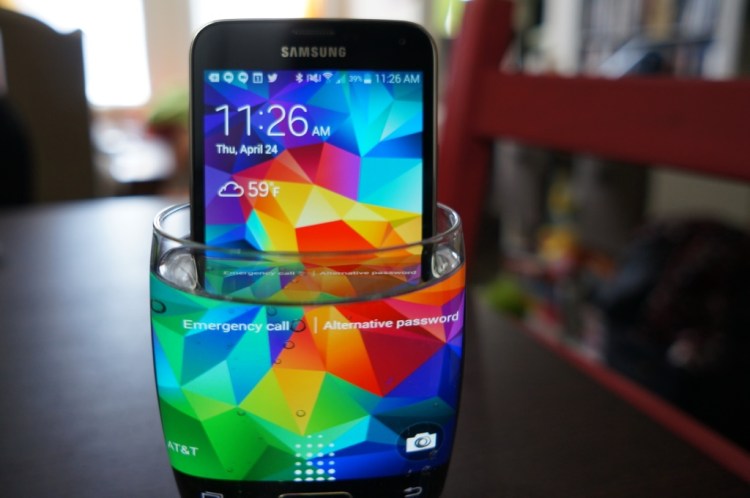With a 30 percent year-over-year drop in mobile revenue and a near 20 percent profit fall in the second quarter, Samsung appears to be in trouble.
Investors responded to the news yesterday by hastily selling off the company’s stock. Samsung’s stock fell 4.5 percent since the earnings announcement, losing around $7.5 billion of its market cap, according to the Wall Street Journal.
Samsung gave us a preview of the dire quarterly numbers earlier this month, and even then it seemed like a clear warning sign for anyone who wanted to get into the smartphone industry.
The Korean electronics giant pointed to a few possible reasons for the massive quarterly decline, including an overabundance of smartphone stock, stronger competition, and the fact that its second quarter earnings are typically a bit weaker compared to other quarters. Still, the massive decline in performance from last year is worrisome.
Samsung tried to assuage investor fears by hinting at two upcoming smartphones in the next six months: another big-screen model (likely the new Galaxy Note) and one being made with “new materials,” according to the company’s mobile SVP, Kim Hyun-Joon.
Unfortunately for Samsung, I don’t think many people expect anything truly revolutionary from those upcoming devices — and that’s one of its biggest problems right now. The company rose to the top of the mobile industry by filling a vacuum for high-quality Android handsets, but the mobile situation today is far different from what it was a few years ago.
Samsung needs to do something different, or it needs to come to terms with the fact that it won’t be the world’s biggest phone maker (by volume of shipments) for much longer.
Here are a few reasons it’s going to be a tough next few quarters for Samsung:
It’s not doing much that can’t be easily replicated
The rise of Xiaomi in China, as well as a slew of other inexpensive phone makers, should be the clearest signal yet that we’re in an entirely new mobile landscape. The Galaxy S3 succeeded because it gave Android users a fairly close experience to the iPhone, but now it’s not tough for any Android manufacturer to create a fairly solid device.
Xiaomi — which coincidentally launched its first phone around the same time as the Galaxy S3 — is finding success by creating high-end phones in China that also cost around $200 and $300 without a contract.
Xiaomi’s newest phone, the Mi 4, even includes a stainless steel metal frame, something Samsung still hasn’t implemented. Xiaomi also holds 11 percent of the Chinese smartphone market, while Samsung holds 18 percent, according to statistics from Canalys. We can expect to see even more low-cost competition like Xiaomi (the $299 OnePlus One comes to mind) this year.
Going cheap could still hurt mobile profits
Even if Samsung manages to deliver cheap-yet-powerful phones for China and other markets, the company will still find it tough to maintain the strong profit growth it’s seen over the last few years. Last fall, for example, Samsung reported a record $9.4 billion in profits.
Lower prices mean lower margins — Samsung will have to figure out a way to sell a ton of cheap phones to make up for selling fewer expensive phones. And at this point, Samsung has little choice but to eventually go cheap.
In China, Samsung says it will bring down some features from its high-end phones to new low-end and mid-range models. (Those devices will still offer big screens, naturally.)
A bigger iPhone will pose a bigger threat
After practically inventing the “phablet” phone market — smartphones that are so big they might as well be tablets — Samsung may soon see some competition directly from Apple, which has so far been content with smaller screens on the iPhone. Current rumors hint that Apple will release new 4.7-inch and 5.5-inch iPhone models later this year. That bigger model, in particular, should have Samsung execs losing sleep.
Samsung has trouble focusing on what consumers actually want
The Galaxy S3 was a big hit for Samsung, but everyone seems to forget how much it struggled with its previous two Android flagships. The Galaxy S1 went nowhere, and the Galaxy S2 was still fairly generic, despite showing signs of what would eventually make the Galaxy S3 popular. It was more a combination of solid market timing and key carrier partnerships that helped push the Galaxy S3 to another level entirely.
But since then, Samsung has struggled to find success with any of its new products. Its Galaxy Tab slates were noble attempts, especially the Galaxy Note line, but they never saw the adoption that the Galaxy S3 did. And the Galaxy Gear proved that Samsung basically has no clue how to enter a new market without following in the footsteps of a more innovative competitor.
The Galaxy S5 was a sign that Samsung is finally focusing a bit more with its products rather than trying to cram in a ton of features that nobody will use. But the company needs to prove it can innovate consistently if it wants to remain a mobile leader.
VentureBeat's mission is to be a digital town square for technical decision-makers to gain knowledge about transformative enterprise technology and transact. Learn More




